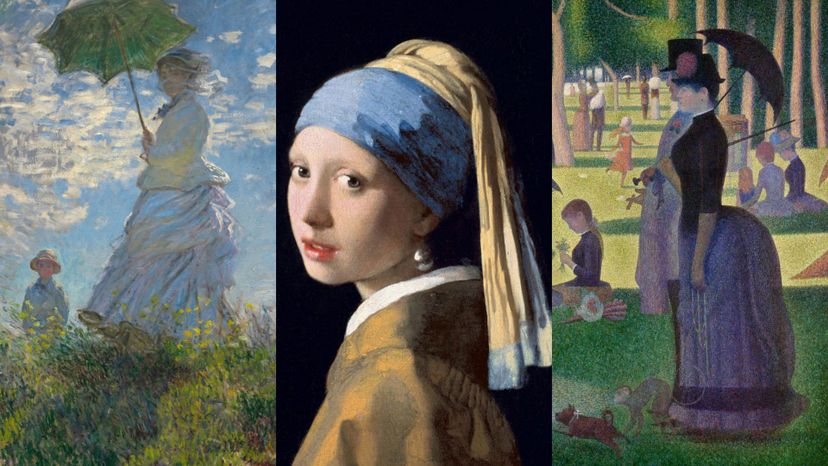
About This Quiz
"Are you ready to test your art knowledge and name all 50 famous paintings in this quiz? From Leonardo da Vinci to Claude Monet, these artists have created some of the most beautiful and mysterious works in history. Do you have what it takes to identify them all?
Art buffs, it's time to show off your expertise! Can you name Andy Warhol's art, Van Gogh's most famous piece, and Georges Seurat's work? This art quiz will challenge your knowledge of the most influential artists in history, so get ready to put your skills to the test.
From style to time period to graphical content, this quiz covers it all. See if you can find your favorite painting and score high on this fun challenge. Artists have left a lasting legacy with their incredible works of art, so take the quiz and see how well you know these iconic pieces!
"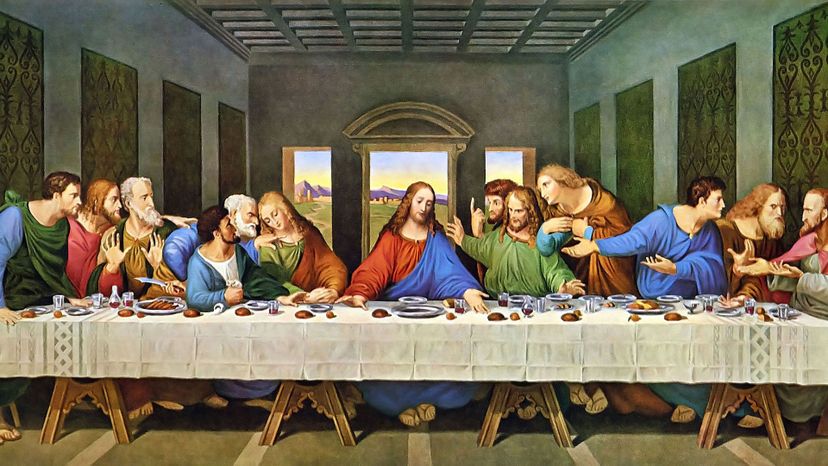
Leonardo da Vinci did not actually choose this subject matter. This piece was commissioned by the Duke of Milan. The food on the table is not just bread and wine. During the 1999 restoration of this piece, they discovered that the table also holds a platter of sliced eel, garnished with pieces of orange.
No one actually knows who the girl is, in Girl with a Pearl Earring. Scholars estimate that the painting was complete in 1665 and is an example of a type of work called a tronie. Popular in the Dutch Golden Age, tronies were paintings that focused on the face of a subject with an added element of fantasy or an exaggeration of expression that differentiates them from portraits.
Water Lilies by Claude Monet is not one painting by Monet; the title refers to a series by him. He is referred to as the father of French Impressionism. Over the course of the series, Monet painted countless individual water lilies in around 250 oil paintings!
Advertisement
Most people think that The Scream is one piece, but actually, it isn't. It is four. Edvard Munch created a quartet of executions of this scene. In 1893, he made a painted version, as well as a crayon version. Two years later, he created a pastel version. Then, in 1910, he used tempera paints on board for his final Scream. The original title for this piece was going to be The Scream of Nature.
Many of Courbet's earliest paintings from the 1840's are self-portraits. El Desperado is one such example. His style varied from Romantic to realistic. Courbet made an impression with his self-portraits and used them as a method of self-promotion and advertisement.
Whistler's Mother actually has a sister piece. Scottish philosopher and historian Thomas Carlyle was one of the people instantly taken by Whistler's Arrangement in Grey and Black No. 1., so he sat for the lesser known, but similarly staged, Arrangement in Grey and Black No. 2. This piece has become one of the most famous American works abroad.
Advertisement
The Birth of Venus depicts several gods within its image. Venus, the goddess of love, is the figure standing on the seashell. She is being blown to the shore by Zephyr, the god of the west wind. We can also see Horae, the goddess of the seasons, and the last figure is either Aura or Chloris, representing wind or spring.
Ivan Aivazovsky was one of the most prolific and successful artists of his time. He believed, "to live means to work," and he painted more than 6,000 works by his death in 1900. He even started a new canvas, The Explosion of the Turkish Ship, on the last day of his life. The Ninth Wave is an example of Aivazovsky's skill for seascapes. In 1836 he participated in a training exercise of the Baltic Sea fleet to better his skill at painting the sea landscape.
David's The Death of Marat depicts a real and gruesome political murder. Outspoken journalist and notable member of the Montagnards, Jean-Paul Marat would never see the conclusion of the French Revolution in 1799. On the 13th of July in 1793, the 50-year-old writer was murdered by 24-year-old Charlotte Corday, who was a supporter of the monarchy. She had blamed Marat for escalating the violence of the revolution. Corday made no attempt to escape after the murder, so she was executed four days later.
Advertisement
Andy Warhol used a hand-stamp when making Campbell's Soup Cans, so that the fleur-de-lis pattern that lines the bottom of each can would be consistent. This placement varies from canvas to canvas. Also, the hues of red and white vary slightly, depending on the canvas.
French artist Paul Cezanne worked an incredible seven years on the painting, The Bathers. Even after so much time, he still felt the work was unfinished. This painting is considered a masterpiece of the modern era, and it made the Top 100 on a BBC special of the greatest paintings of the century.
In an auction by Sotheby's in New York in 2010, Amedeo Modigliani's Nude Sitting on a Divan sold for an incredible $68.9 million. It has been said that art purchases during the Twentieth Century have focused on the brand or name of the artist. Art is fashion and the more famous and well-known the artist is, the more ridiculously priced their pieces are.
Advertisement
The Cyclops depicts a myth starring an "unlucky naiad Galatea," loved by Polyphemus, the most famous Cyclops. Like most Cyclops in mythology, Polyphemus was villainized as a wild creature that hunted its victims and consumed them. Redon has taken this myth and given Polyphemus a makeover. In Redon's version, Polyphemus is shown as a non-threatening passive creature. The normally menacing beast is shown gazing off softly. Galatea, the naiad, is shown naked and vulnerable on a patch of vegetation. It appears Polyphemus is keeping a protective and watchful look over her.
The Baptism of Christ is a famous painting made by da Vinci's master, Andrea del Verrochio, at circa 1472 in his studio in Italy. The painting was completed by Verrochio in collaboration with his apprentice, da Vinci, who painted and finished the details of some parts of the painting, most specifically the angel. The painting was an altarpiece commissioned by the monks of the San Salvi Church near Florence.
When Rousseau first created the painting, The Sleeping Gypsy, he tried to sell it to the mayor of his home town. Unfortunately, the mayor did not want it, so it was later sold to a private collection. This painting is currently housed in the Museum of Modern Art in New York City.
Advertisement
Self-Portrait with a Sunflower was created by Anthony Van Dyck. The sunflower, which always leans toward the sun, is a symbol of dedication to Van Dyck's monarch, Charles I.
It is a triptych, which is named after the central panel. Hieronymus Bosch was attempting to depict the whole of human experience, from life to afterlife, in three related canvases. The first is meant to represent Paradise, the last is meant to represent Hell, and in the center is The Garden of Earthly Delights.
The muse that the painting, The Raft of the Medusa, is based on is not a myth, but actual history. The Medusa (Meduse) was a French naval frigate with 40 guns, used to fight the Napoleonic Wars in the early 19th century. This ship amazingly survived these maritime battles, but then tragically crashed on a sandbank in 1816, during an attempt to colonize Senegal. Only 10 of the approximately 150 people on board survived the catastrophe. Gericault drew his inspiration from the accounts of two survivors.
Advertisement
Bathers at Asnieres is one of the largest-scale compositions created by Georges Seurat. This was Seurat's first painting to be exhibited at the Society of Independent Artists. Georges Seurat died at a very young age, just 32, but during his lifetime he created a revolution in the history of art. He pioneered a new way of painting and a new style of art.
Thomas Eakins was commissioned to create the "Agnew Clinic" for Dr. Agnew a well known surgeon and anatomist.
If you look closely at A Sunday Afternoon on the Island of La Grande Jatte, you will see that the painting is actually made up of millions of different dots. This was the first of its kind. Seurat became the father of Pointillism and of Neo-Impressionism. He actually preferred to call his technique "chromo-luminarism," a term he felt better stressed its focus on color and light.
Advertisement
The Harlequin's Carnival was painted between 1924-1925, by Joan Miro. It is one of the best surrealist paintings by this artist and it is preserved in the Albright-Knox Art Gallery in Buffalo, New York. Harlequin is the name of a well-known Italian comic theater character that is generally identified by his checkered costume. The 'carnival' part of the title may refer to Mardi Gras, the celebration that happens before the fasting of Lent begins.
Last Judgment, as can be guessed by the title, depicts the end of the world, when judgment is going to be held by Jesus. This painting was created c. 1435 by Stefan Lochner a German painter who liked to depict scenes from the bible.
Paul Gauguin created this Bible-influenced painting, Vision after the Sermon, in 1888. It was painted with oil on canvas and is currently displayed at a gallery in Scotland. It was created in Pont-Aven, Brittany, France, and is still one of the most popular biblical paintings.
Advertisement
John Singleton Copley was born in Boston in 1738. Copley was trained in visual arts and was influenced by English mezzotint portraits. He went to London to develop his artistic talent and later spent a year in Italy studying various artistic styles before returning to London once again. Watson and the Shark is an example of Copley's common depiction of climactic moments. This leaves the viewers in suspense because they are unsure what the resolution will be.
In the summer of 1930, Wood was visiting Eldon, Iowa, to attend an art exhibition. While he was there he saw a little white cottage that had a "carpenter Gothic" window on the second floor that Wood thought was "pretentious" for such a quaint and humble home. He sketched out the house on an envelope, providing the base for what would become his most famous painting. This painting is what made Wood famous and it was an instant hit.
Bacchus and Ariadne is one of Titan's most famous paintings, and is part of a five commissioned set by Alfonso d'esme for his palace in Ferrara, Italy. Like many Italian Renaissance princes, he had a private art gallery, known as a camerino or studiolo. These paintings are all based loosely on Roman rites and rituals described by the poet Ovid.
Advertisement
The Embarkation for Cythera is a painting by the French painter, Jean-Antoine Watteau. It is also known as Voyage to Cythera and Pilgrimage to the Isle of Cythera. Watteau submitted his work to the Royal Academy of Painting and Sculpture as his reception piece in 1717. The painting is now in the Louvre in Paris.
The Dream or La Reve was painted by Henry Rousseau. It was his last completed work before his death.
Guernica was actually one of Picasso's commissioned paintings. As the 1937 World's Fair approached, Spain's democratic government wanted the Spanish pavilion at Paris' International Exposition Dedicated to Art and Technology to feature a mural that would expose the atrocities of Generalissimo Francisco Franco and his allies. An article in the "Times" inspired him to paint what he did.
Advertisement
Starry Night is actually a depiction of Van Gogh's view from an asylum. After experiencing a mental breakdown in the winter of 1888, Van Gogh checked himself into the Saint-Paul-De-Mausole asylum near the Saint-Remy-de-Provence. This view became the basis of his most iconic work. Historians argue whether or not the village depicted in this painting is inspired by his homeland in the Netherlands.
Christina's World depicts a real Christina. The 31-year-old Andrew Wyeth modeled the painting's frail-looking brunette after his neighbor in South Cushing, Maine, named Anna Christina Olson. She suffered from a degenerative muscular disorder that prevented her from walking. Rather than using a wheelchair, Olson crawled around her home and the surrounding grounds.
Olympia was painted using strong brush strokes, which at the time many people considered to be childish and an unskilled way to paint. Manet based his composition of Olympia on a painting of The Venus of Urbino, by Titan. Manet's model, Victorine Meurent, is depicted as a woman whose body is a commodity. The way it is painted, with startling contrast between dark and light, showcases the subject of the painting much more vividly.
Advertisement
The Persistence of Memory was painted in the midst of a hallucination. Around 1931, when Dali created this painting, he had perfected his "paranoiac-critical method." The artist would try to enter a meditative state of self-induced psychotic hallucinations so that he could make what he referred to as "hand-painted dream photographs."
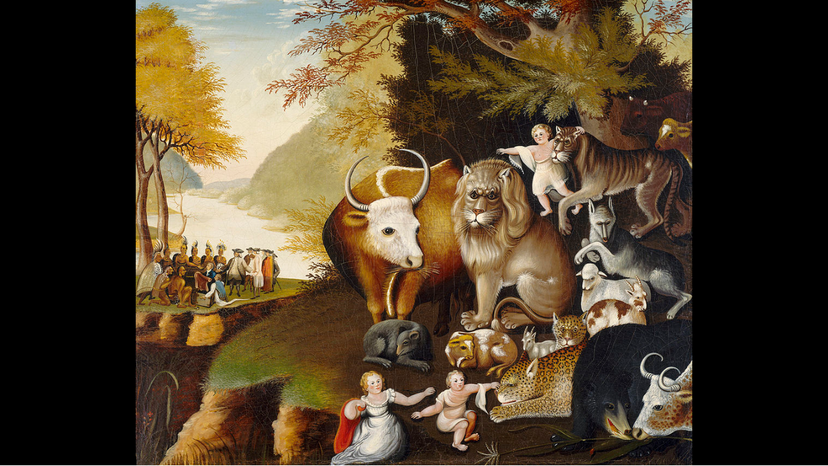
There are 61 versions of the painting Peaceable Kingdom, and each one is slightly different. Hicks used symbols in his painting to represent peace-animals and people together, settlers and Indians working together. Hicks once painted his own face on the lion in one of these paintings.
This painting, Woman with a Parasol, belongs to a series of paintings which Monet produced during the summers of 1875 and 1876. The landscape background in the series of paintings depicts the garden surrounding Monet's second home in Argenteuil, in the suburbs of Paris, along with the poppy-filled fields in Colombes and Gennevilliers. Monet's wife, Camille, serves as his model along with his son, Jean, who was eight years old at the time of the painting.
Advertisement
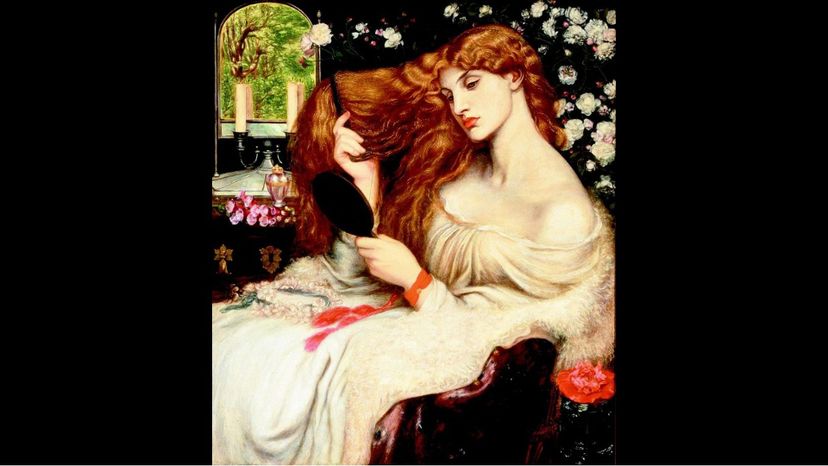
Lady Lilith is an oil painting by Dante Gabriel Rossetti, first painted in 1866-68, using his mistress Fanny Cornforth as the model. Later it was altered, to show the face of Alexa Wilding. The subject is Lilith, who in ancient Judaic myth was the first wife of Adam. She is associated with the seduction of men and the murder of children. She is shown as a "powerful and evil temptress."
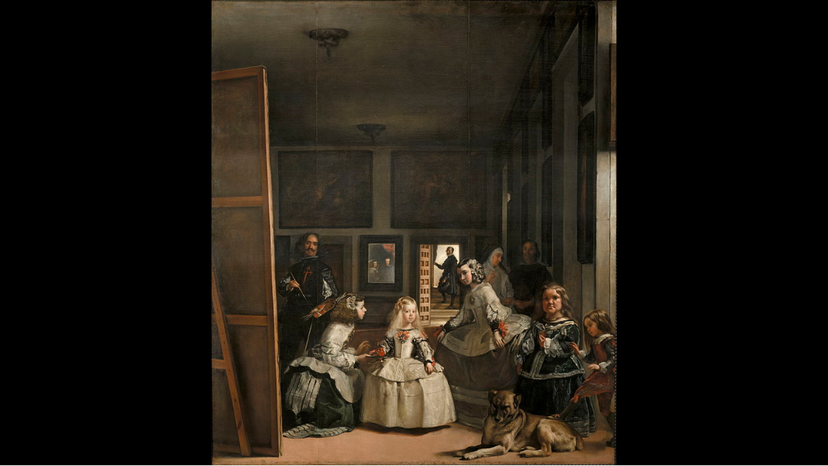
Las Meninas was posthumously altered under the royal command. Philip IV absolutely loved Velazquez and hung many of his paintings in private quarters around his residence. After the painter died, in his honor, Philip IV commanded that the Order of Santiago's insignia be added to the chest of Velazquez's Las Meninas figure. Some historians speculate that the king himself was the one who painted on this final touch.

A popular reading of Nighthawks, by Edward Hopper, is that it is a depiction of characters that are separated from the outside world by the light and windows Hopper carefully rendered. There is no visible door which would allow the viewer entry into this lonely nighttime world. For Hopper, the painting was actually about feeling alone in a crowd. Much of his work depicts the isolation that can be felt amid the bustle of New York City.
Advertisement
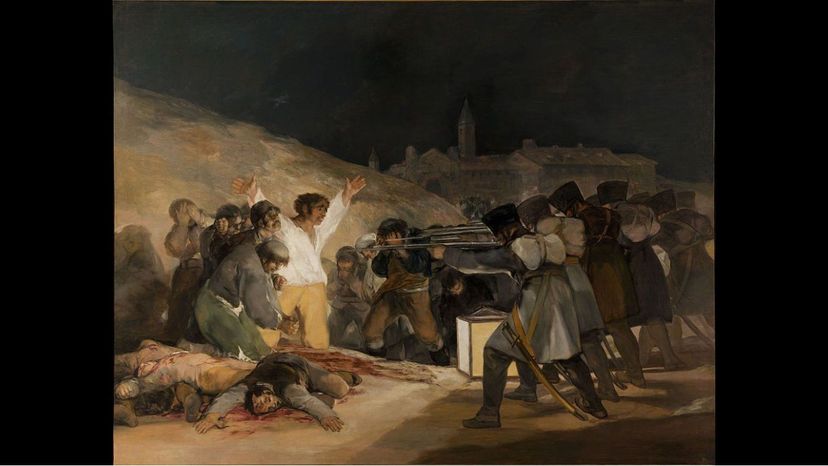
The Third of May 1808, by Francisco Goya, depicts a dark moment in Spanish history. In 1807, Napoleon Bonaparte's forces crossed the Pyrenees into allied Spain, under the pretext of invading Portugal. Once in place, the infamous French Emperor began to take control of regions of Spain. When King Charles IV realized what was happening, he attempted to flee to South America. The people of Spain rose up against the army, but were brutally suppressed.
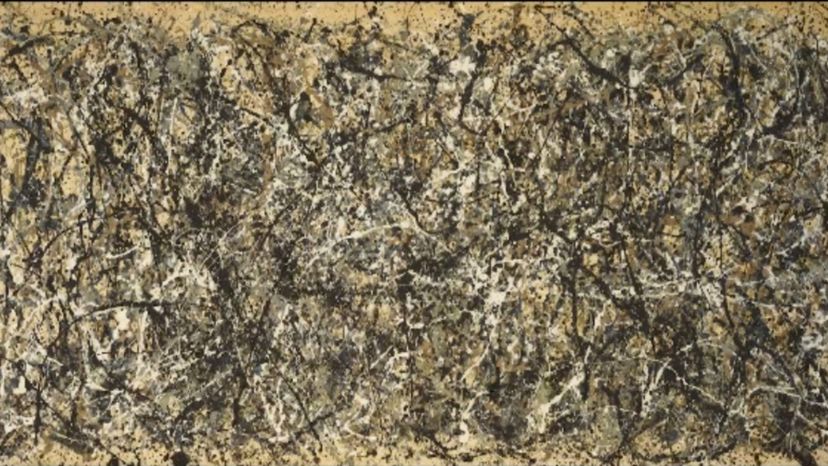
One: Number 31, 1950 is one of three successive paintings that Pollock did in the summer and autumn of 1950. He started by laying the canvas on the floor and dribbling, pouring, and flicking enamel paint on it. The density of interlacing liquid threads of paint is balanced and offset by puddles of muted colors and by allover spattering.

Gustav Klimt's career was actually winding down when he painted this famous painting, The Kiss. Klimt had received scathing scorn in the first decade of the 20th century for his three-part University of Vienna Ceiling Paintings. Because of the nudity in these works, his interpretations were derided as pornographic and excessively perverted.
Advertisement
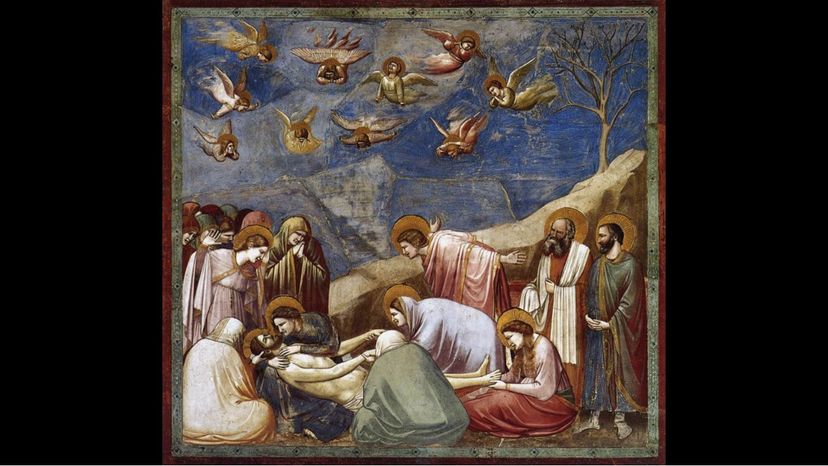
The Lamentation of Christ is a very common subject in Christian art. After Jesus was crucified, his body was removed from the cross, and his friends were there to mourn over his body. This event has been depicted by a multitude of artists, including Giotto di Bondone.
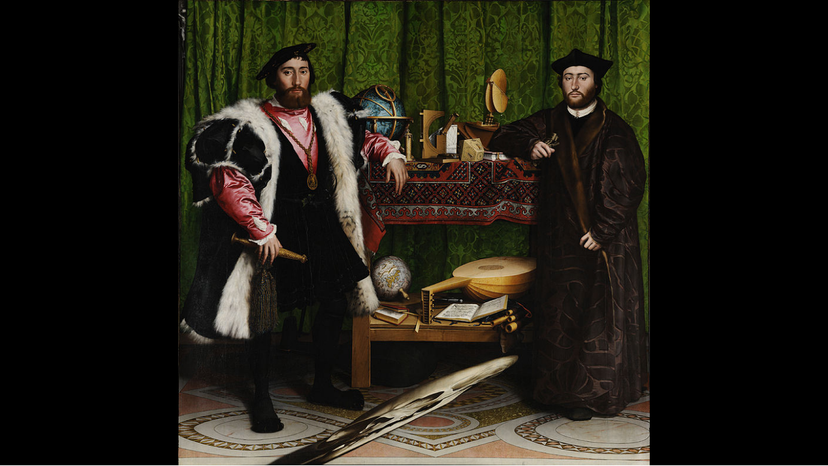
The Ambassadors broke from Hans Holbein's established style. Following in the footsteps of his father, Hans Holbein the elder, he made his name by dedicating his talents to religious subjects like "The Body of the Dead Christ in The Tomb." As he approached his 30s, Holbein was making a successful living in Oeuvre, but he still decided to take a chance and work on new subject matter. He traveled through England, Switzerland, and London, expanding his art form into more secular portraits.

The Yellow Christ is a painting made by Paul Gauguin in the autumn of 1889, in Pont-Aven. Together with The Green Christ, it is considered one of the key works of symbolism in painting. Gauguin first visited Pont-Aven in 1886. He returned to the village in early 1888 and stayed until October of that same year. Only for a short visit in the summer of 1889 to Paris did Paul Gauguin interrupt his trip. Soon after his return to Pont-Aven, he painted The Yellow Christ.
Advertisement
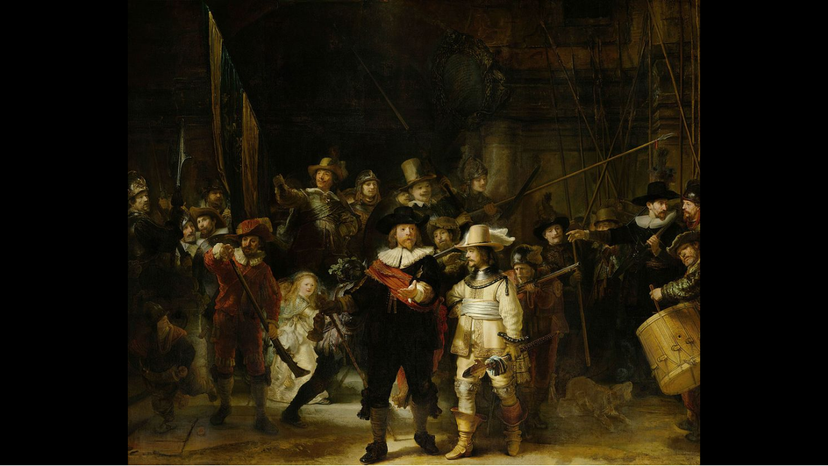
The Night Watch is actually not set at night. The nickname, the Night Watch, became more popular than the painting's huge moniker. Rembrandt's painting was set in the daytime, however. The dark background, which is mistaken for night's sky, was actually a varnish turned dark with age and dirt. During the restoration in the 1940s, the varnish was removed, but the name stuck.
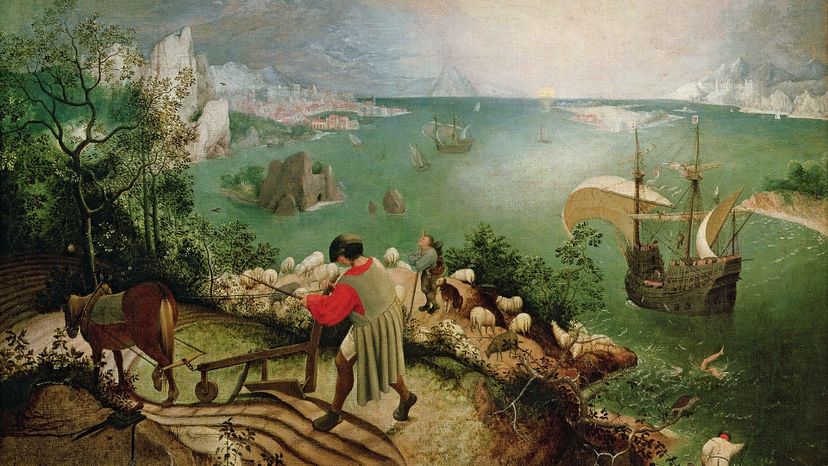
Landscape with the Fall of Icarus touches on the Greek myth tragedy of Icarus. According to Ovid and Appolodorus, Icarus, who was the son of Daedalus, took flight from imprisonment wearing the fragile wings his father had made for him. Ignoring his father, who told him to keep a middle course and avoid getting close to the sun, Icarus exultantly flew too close and melted his wings. Icarus then hurtled into the sea and died.
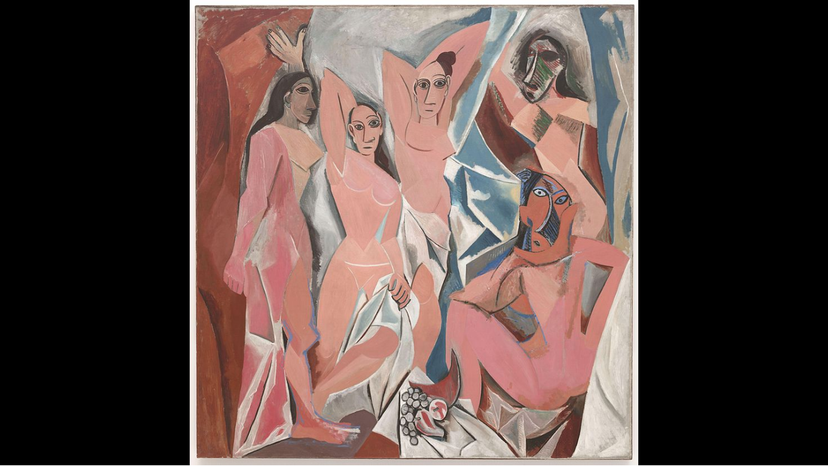
Les Demoiselles d'Avignon was painted in 1907 and is the most famous example of cubism painting. This painting is a very large piece of work and took nine months to complete. His normal process was to create hundreds of sketches and studies to prepare himself to create the final work. This piece shows the influence of African art on Picasso.
Advertisement

Jean Auguste Dominique Ingres was intrigued by the customs of the near Eastern world, particularly by the exotic sensuality of the Orient. Using the common theme, the female nude, Ingres added his own preference by using an odalisque (a female slave of the harem; the household of the sultan) as his main inspiration for the work.

Nude Descending a Staircase reimagines the human form through a mechanical lens. It keeps with Cubism in some ways and has repeatedly been displayed in Cubist art exhibits. Duchamp's use of different static positions created a motion and visual violence that Cubists claim made this piece more futuristic than earlier Cubist work.